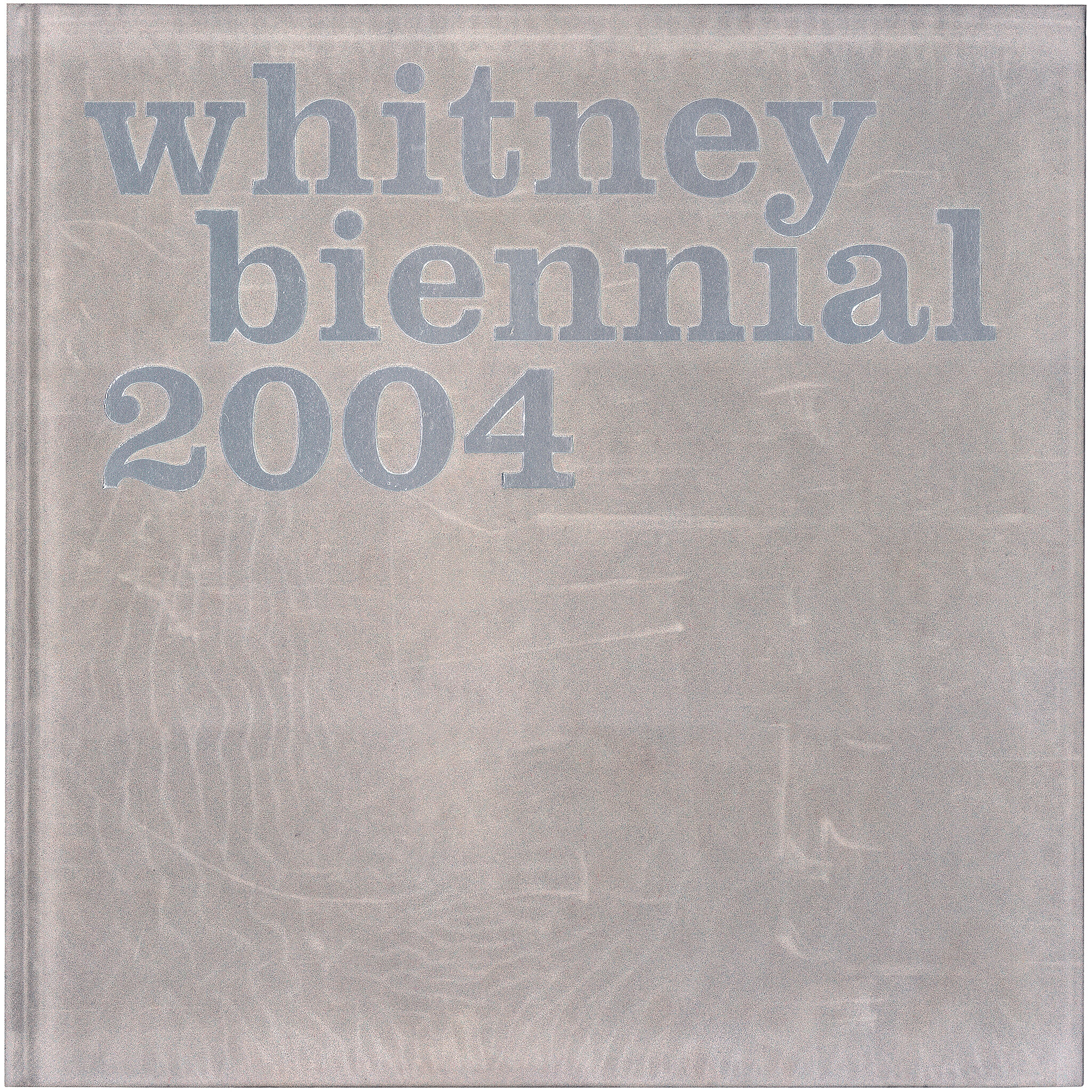Wade Guyton
1972–
Wade Guyton’s polyptych painting Untitled spans a monumental fifty feet and was created specifically for the long, narrow proportions of the gallery in Milan where it was first installed. Although made on preprimed linen traditionally used by painters, the work employed neither brush nor paint but was instead produced by a 44-inch-wide inkjet printer (Epson’s 9600 UltraChrome model, to be exact). Guyton folded each of eight canvases in half lengthwise and fed them through the machine twice, printing the same TIFF image file—a stack of seven black bands— once on each side; when unfolded and stretched on separate panels that are then hung five inches apart, the canvases merge into a rhythmic, undulating expanse of black and white intervals.
Untitled extends a practice Guyton initiated in 2002, when he first made “printer drawings” using Microsoft Word and his desktop printer. Though the scale of the printer has increased, he continues to rely on everyday technology and software, exploiting their failures and limitations to productive ends. For Guyton, a new technique often “starts as an accident and then becomes a template for other things, or reproduces itself and generates its own logic until something else intervenes to change it.” The repetition of the TIFF file in Untitled acts as a yardstick that reveals these incidents of the process: as the fabric jams, the printer clogs or runs dry, or the giant canvases smudge against the studio floor, the initial image produces countless variations. While the resulting painting formally recalls the elegance of high modernist abstraction, Guyton makes a work that also offers a picture of how machines, humans, and images interact haltingly in the early twenty- first century.
Introduction
Wade Guyton (born 1972) is an American post-conceptual artist who among other things makes digital paintings on canvas using scanners and digital inkjet technology.
Wikidata identifier
Q3564983
Information from Wikipedia, made available under the Creative Commons Attribution-ShareAlike License . Accessed December 22, 2025.
Introduction
Guyton has created a large body of work, presented as paintings, created with inkjet printers. He prints simple abstract digital shapes, lines, stripes, and letterforms onto canvas, incorporating the smears and registration errors created by the machines themselves into the final works. He was the subject of a retrospective exhibition at the Whitney Museum of American Art in 2012.
Country of birth
United States
Roles
Artist, installation artist, painter, photographer, sculptor
ULAN identifier
500122494
Information from the Getty Research Institute's Union List of Artist Names ® (ULAN), made available under the ODC Attribution License. Accessed December 22, 2025.




